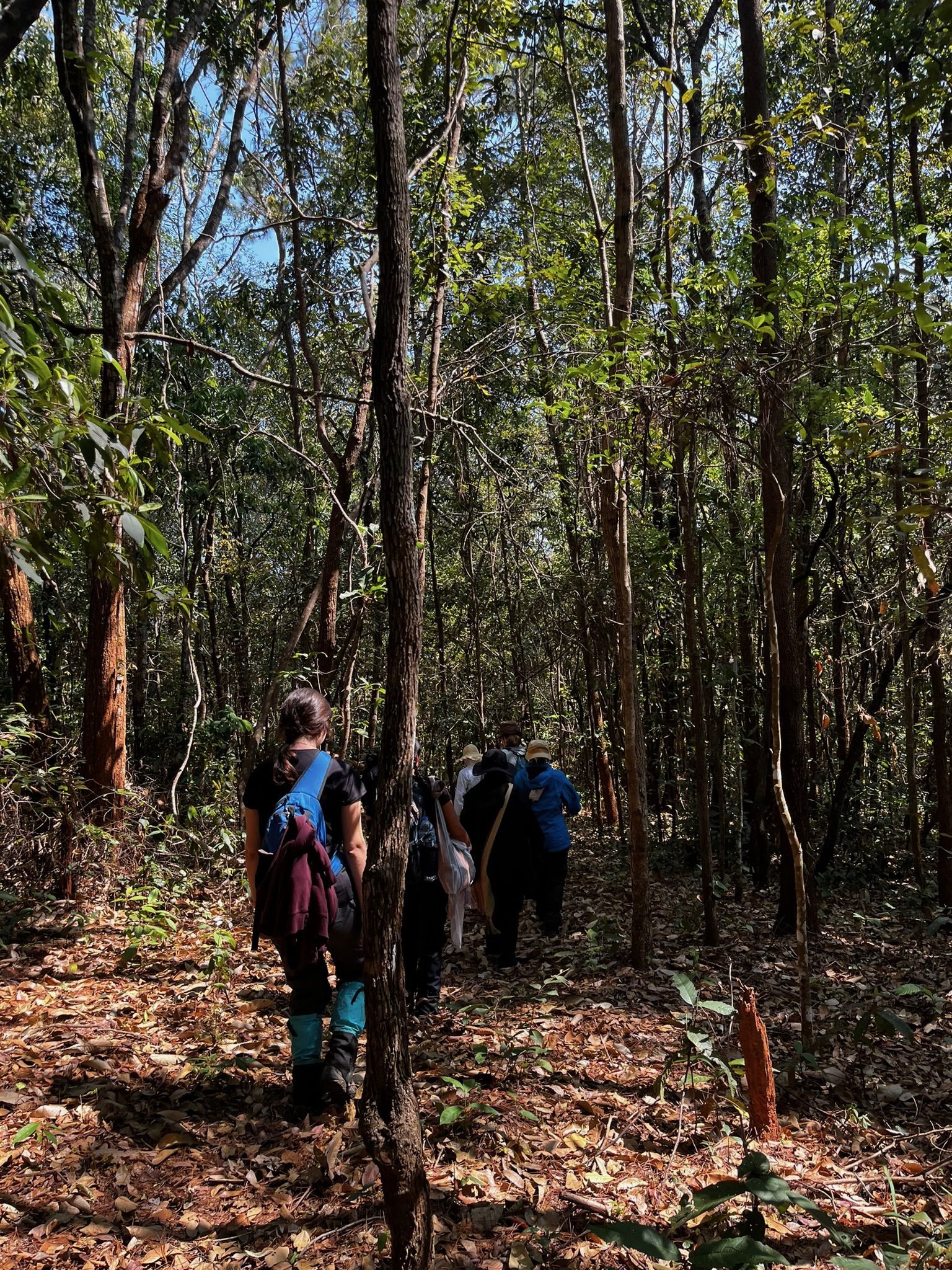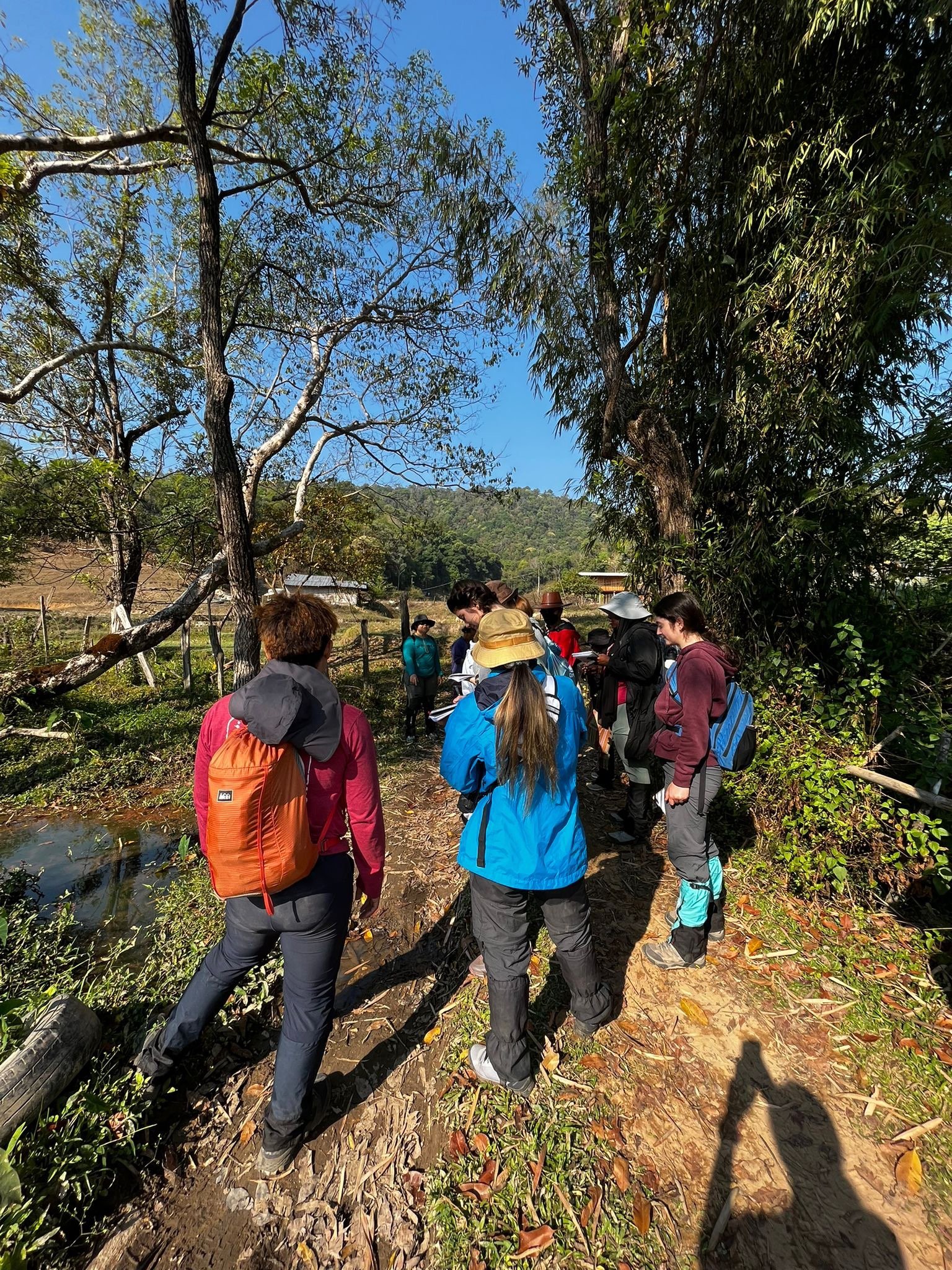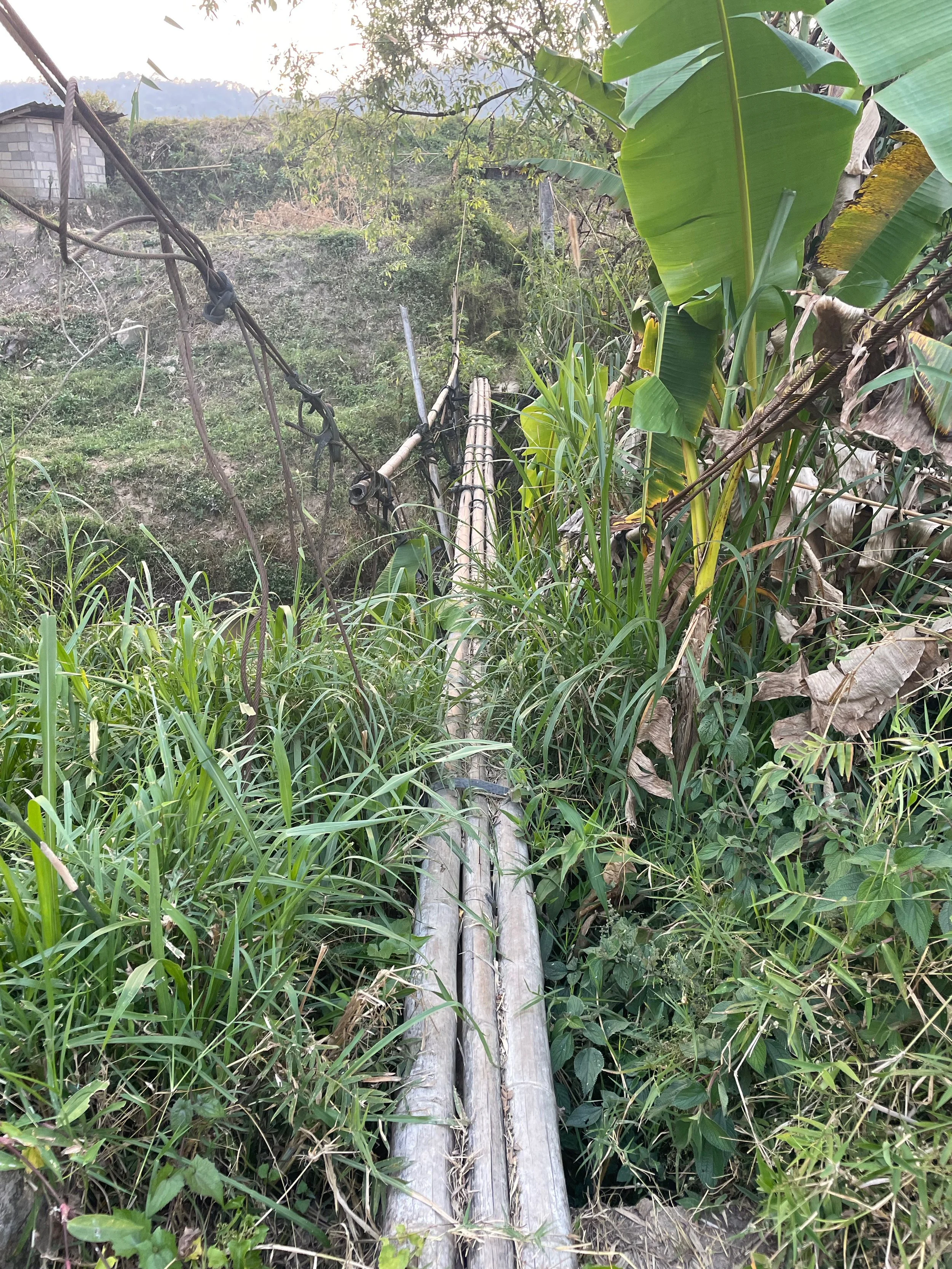Information Activism for Indigenous Rights in Thailand: An Interview With Pi Phnom
Huay E-Khang Village, Chiang Mai: (Ba Pu-Ying), Women's Conservation Forest that is ecologically protected and managed by an Indigenous community. (Photo: Alyana Contant)
In the first article in this series, I explored some of the systemic injustices faced by Indigenous communities in Thailand as well as their efforts to build networks of solidarity. To provide additional insight into the subject, I had the opportunity to speak with Pi Phnom, an Indigenous journalist based in Northern Thailand. He is known for founding the Indigenous Media Network (Thailand) and has collaborated with other Indigenous organizations such as the Inter Mountain People Education and Culture in Thailand Association (IMPECT) on many pertinent Indigenous issues in the country.
Much of his message through the Indigenous Media Network is to unfound stereotypes in national and local media by working directly with the media outlets and providing journalistic material tailored to the needs and representation of Indigenous communities. In this interview, I wanted to focus on his perspective as an Indigenous person and why he chose to use a journalistic approach to address Indigenous rights in Thailand.
What made you want to become a journalist?
There are [information] gaps between Indigenous communities and the majority population in Thailand. That history has repeatedly created conflicts. For example, they once understood Indigenous peoples as a threat to national security, as harmful to national security. Once, [they] viewed Indigenous groups in the highland mountain areas in the northern part of Thailand as drug dealers and [as] the ones who are committed to deforestation and [environmental] destruction, and so on. This is only one side of the coin. This information has been widely distributed across the country over the last 50 years. So, this means that this has become a [source] for discrimination against Indigenous groups because the people perceive and believe the information that they have heard from different sources previously.
He went on to say that this misrepresentation isn’t intended to harm Indigenous peoples, but rather is the result of limited information:
Sometimes… the misinterpretations… and misuse of words that describe Indigenous peoples don’t mean that that person intentionally abused Indigenous peoples or groups. They just act and behave on whatever information they have in their minds. I would like the main encouragement to be, to provide them with correct information so they can learn from us and open another door to learn about Indigenous community, so they can see us from our side. Like I said earlier, a coin has two sides. So before, they heard our story from someone else. But now they can see, hear, and talk to us directly. That was my proposal, a two-way communication between Indigenous people and the public. And that was my greatest motivation that brought me to be a journalist.
Phnom’s metaphor of the coin shows how every story has two sides and suggests that we should endeavor to understand the issue from an inclusive and communicative perspective, centering Indigenous views about their own communities.
How does your desire to open communication between two sides and your personal identity influence that communication approach in your work?
When I was 12 years old, I relocated from my community to the city to continue studying, and I returned to my community when I was 19 years old. So that means I can speak fluent Thai, can read, can write, can communicate, and speak in public. But meanwhile, I was also trying to identify myself as Karen. Because you know, you are bullied at school, you are the only one that is different, not being a native Thai speaker. At first, I would say, I was quite afraid to show up as myself, and would try my best to find my identity when I was in the high school or in public. Once the people learn that you are Indigenous, they start to bully you, asking questions about your life in the community. So that’s the picture, it’s quite difficult, quite hard for us to really identify and open ourselves to the public.
Governmental reforms around rural or small school education have left Indigenous communities with very limited access to quality education. People in Indigenous communities are often forced to send their children away to learn Thai and other skills if they want their child to receive quality education and be successful later in the majority society. However, as a direct result of sociopolitical factors, these children are often isolated from a familiar and accepting culture.
Additionally, the public harbors harmful stereotypes about Indigenous peoples; stereotypes that often fuel bullying and ostracization of Indigenous children in public schooling systems. These experiences are directly reflected in Phnom’s life and can become a barrier preventing many children from proudly expressing their identity in these spaces.
Later when I returned to my communities, I got to know one of the NGOs, who taught us about Human Rights and Indigenous Rights. And, we do have rights to exercise in society, and that’s why I look at the root of the problem of why people are identifying us as another class, or a second-class population. The main thing was information. Whatever information they have gained was the root of the problem. Being a journalist, you provide them the facts and correct information. That’s why I decided to work in media, as a journalist.
Various NGOs work to inform Indigenous communities of their fundamental human rights and to work alongside them to exercise those rights. The outreach done by NGOs is often crucial in building awareness in communities about their options and providing greater context to their circumstances. They also serve as a crucial resource, bringing in connections to the larger organizing around collective issues.
Going into [the subject of] human rights, what is the background of Indigenous communities in Thailand and the collective issues they face? Land rights often play a role, but what are the overarching issues affecting all communities?
Huay E-Khang Village, Chiang Mai: ISDSI student tour group learning about natural resources, land management and plant diversity from village head, Pi Noraeri. (Photo: Alyana Contant)
The first part is, who are the Indigenous people in Thailand? There are Indigenous communities that are native. They do exist here before the formation of Siam. Many documents mention that there are local native peoples, particularly in the Western part of Thailand bordering Myanmar. Before that era, that is Myanmar and Thailand, Karen people are the same country. Indigenous people in Thailand, according to Mahedol University’s Linguistics Department, there were 72 spoken languages in Thailand- that one source. Another source is the [Princess Maha Chakri Sirindhorn Anthropology Centre (SAC)] in Bangkok, a public organization under the Ministry of Culture in Thailand. According to their studies, there are 64 major ethnic groups in Thailand. According to the Council of Indigenous Peoples in Thailand, 42 out of 64 identify themselves as Indigenous People. Even though the government has voted in favor, raised its hand in 2007, to endorse the UN Declaration on the Rights of Indigenous People, that was not a Convention, so it’s not legally binding. The Thai government, instead of calling us “Indigenous People,” they call us “ethnic groups.” As such, the Indigenous communities are in this ongoing struggle to be endorsed under the Thai constitution, to gain official recognition.
The changing of the language from “ethnic minorities” to Indigenous community, how would that change have a direct impact?
The recognition of Indigenous Peoples, only a few people get official recognition, so it became a collective issue. When you are not recognized, you don’t have rights over almost everything. For example, Land Rights - you don’t have rights over land, even though you have stayed there for two or three centuries. But once they declare a national park, they don’t really separate you out or demarcate it as your territory outside of the national park area. You become an illegal resident on the land. Not just Indigenous people, but many people who live in the forest become illegal residents there. Even though you have a house built or citizenship, that doesn’t mean you have legal rights over the land.
Phnom also emphasized the importance of Indigenous peoples’ right to education, health, and culturally-based education.
How have the Indigenous groups of Thailand built solutions to combat these issues in their community? Do you have specific memories of these successes or moments of change?
Well, I would say that there are always collective movements of the Indigenous peoples. On the ground level each community right now is trying to document their history or village profile about how long they have been settled there to prove that we are here, and we are really a native people. We lived here before many national laws. This history can be used to demarcate the land and produce community maps which show they are not the ones who are contributing to deforestation. [The maps show] they have been here for generations and this part of the land has been used by them and how they have protected the forest. So, this kind of information has been collectively documented on the ground level by each community.
And then at the second level, the local level, many communities come together in solidarity. For example, Chom Thong District, Chiang Mai Province, they generated collective community regulations and pushed it into the parliament agreement. So, they become an annulment or regulation announced by local parliament office.
Huay E-Khang Village, Chiang Mai: Natural bridge made of bamboo connecting plots of agricultural land over freshwater river. (Photo: Alyana Contant)
At the national level, as I assessed earlier, there are groups of Indigenous people who come together. So, this network of Indigenous people in Thailand consists of over 40 Indigenous groups across Thailand from the North to the South. This is a collective effort to push forward…for the recognition of Indigenous people in Thailand. Another reason that they formed these national groups is because they would like to send their representatives to make enough voice, to change the policies, because the measures of the problem, the root cause of the problems, came from policies. So, the highest goal right now is to change the policies, amend the laws, amend the policies to get the Indigenous people to be recognized.
How would these amendments take place? What would those changes look like?
For example, in 2021, in our Constitution, 10,000 Thai citizens can propose a law. If you can collect 10,000 signatures, you can propose a law. The Indigenous groups, along with [registered citizens] in Thailand, voted to draft a law proposed by the Council of Indigenous People in Thailand. So, they proposed this act to the Parliament, the National Parliament. I think right now it has been listed on the meeting’s agenda, but they haven’t brought it up yet. But right now, the government has already been dissolved. I believe the next term, the next government, they will push forward this proposal again. They can’t [do this], immediately. Once the new government has taken place, they can start pushing forward on the new proposal.
For context, the Network of Indigenous Peoples in Thailand or NIPT, was organizing Thai citizens to back this legislation. One 2021 article by Prachatai goes into detail about this process and some of what the proposal outlines. At the time of our conversation, the Parliament in Thailand had been dissolved and was in the process of reelection. In August 2023, a new prime minister, Srettha Thavisin, was voted in after a long political deadlock. He recently gave a speech about the country’s most pressing problems, specifically mentioning climate change, economic instability and the ongoing impact of COVID-19. As of this writing, Thailand is undergoing some major political shifts, which may make the visibility of Indigenous issues more difficult.
The issues facing Indigenous peoples in Thailand start with recognition but extend much further into quality of life, education, and the right to cultural preservation. Thailand is undergoing a unique transformative process through the collective efforts of vulnerable Indigenous communities networking and organizing to create change. This article spotlights how one individual with a powerful story is using his voice, resources, and collaboration to create change on multiple levels in conjunction with his community.



